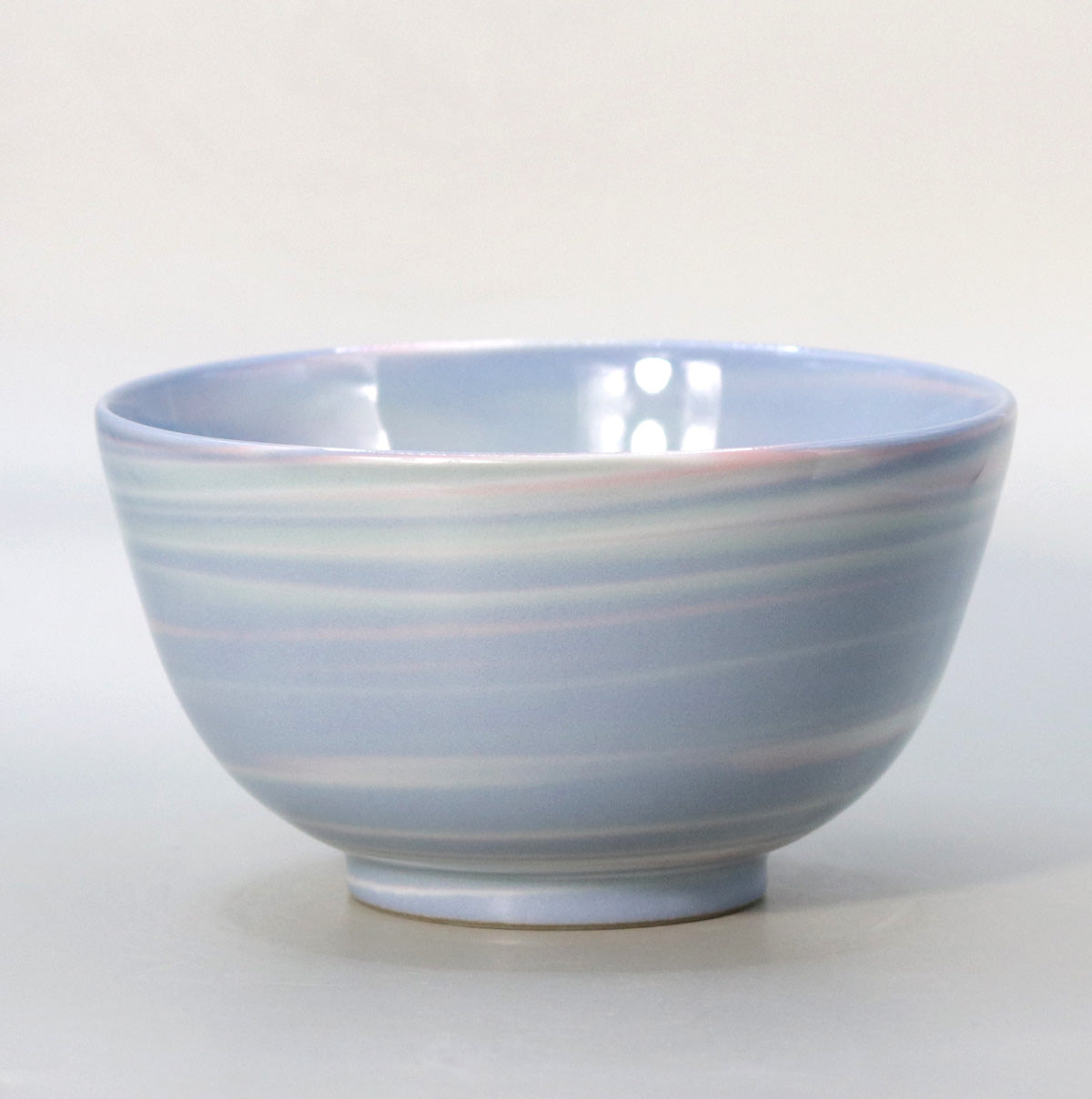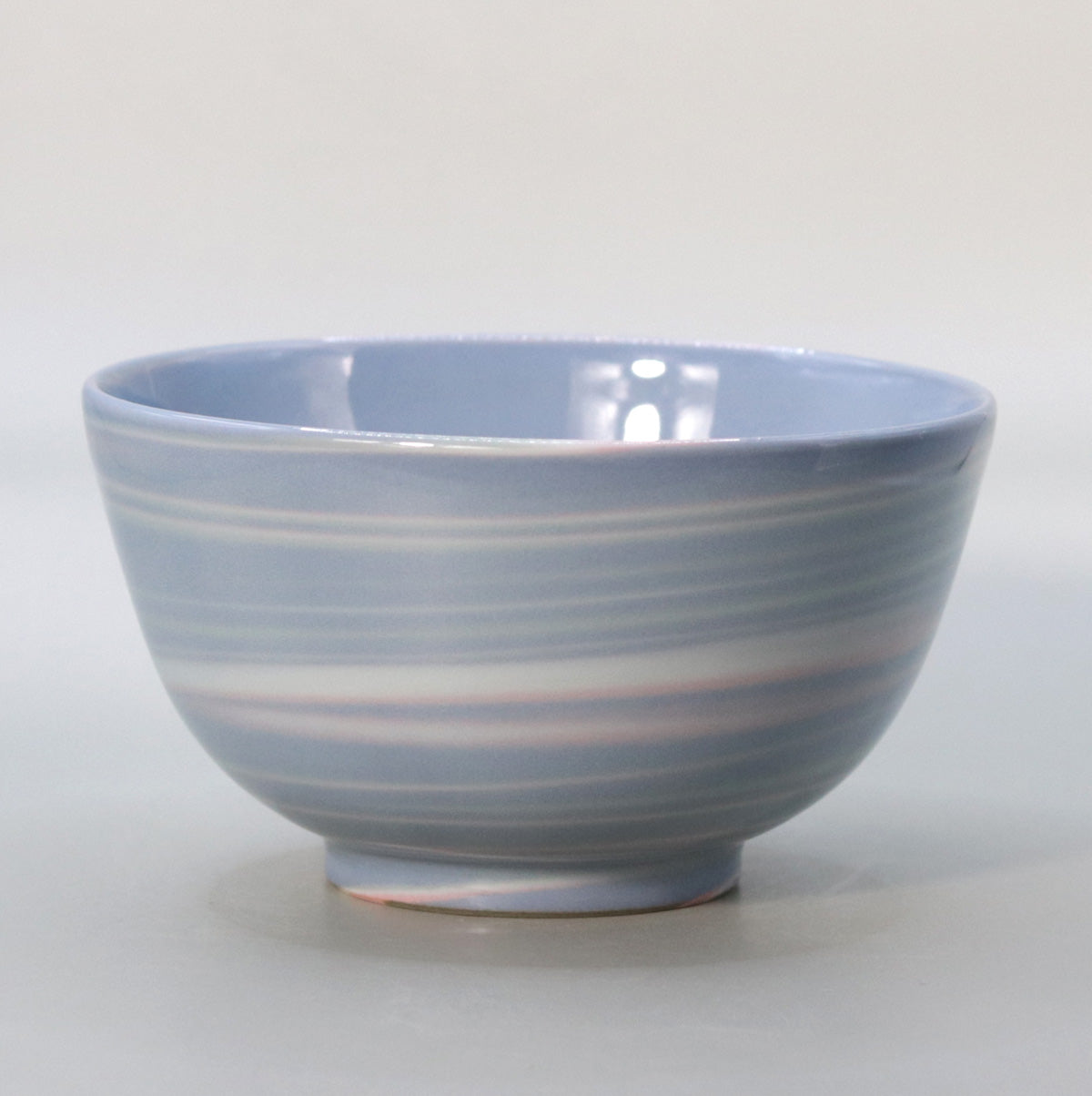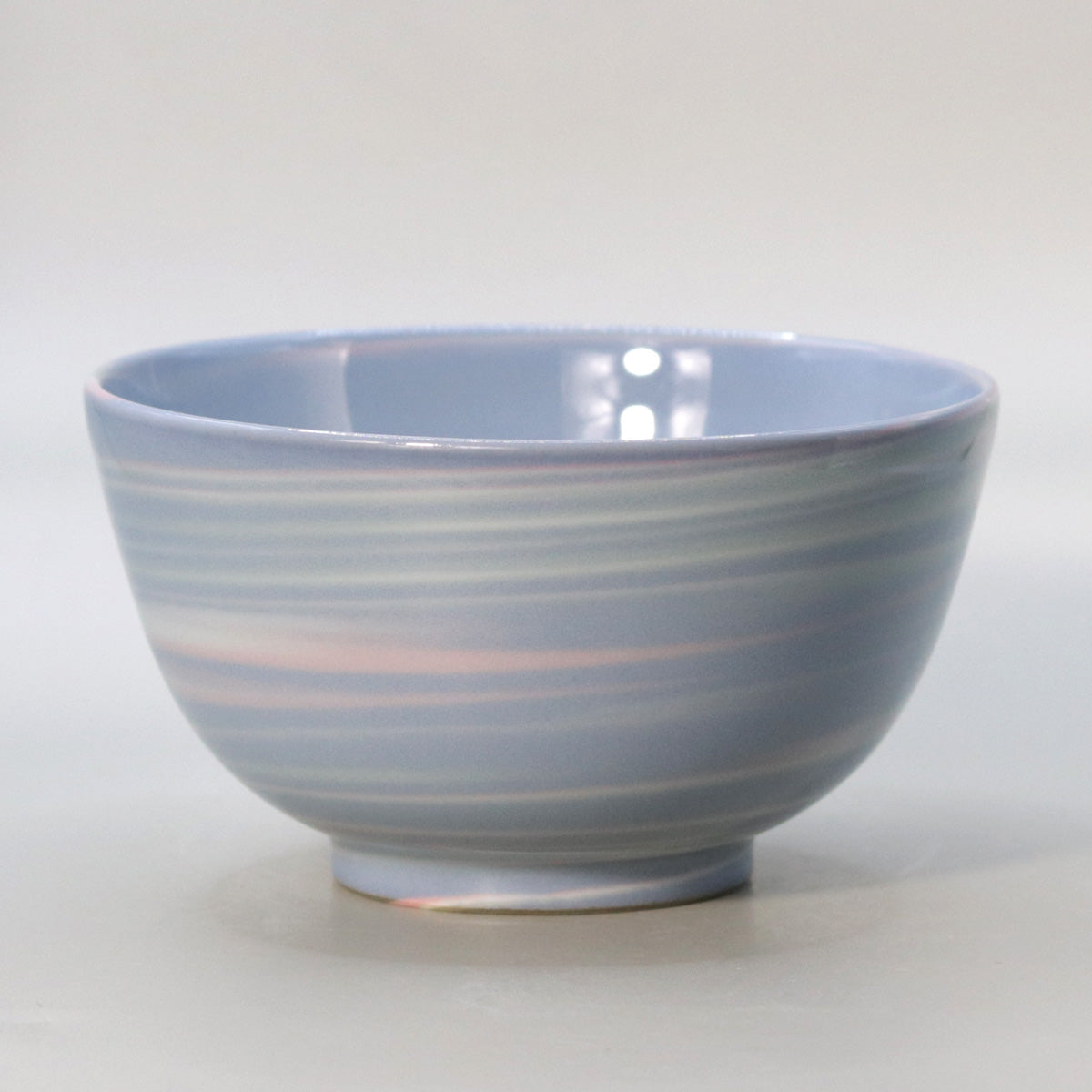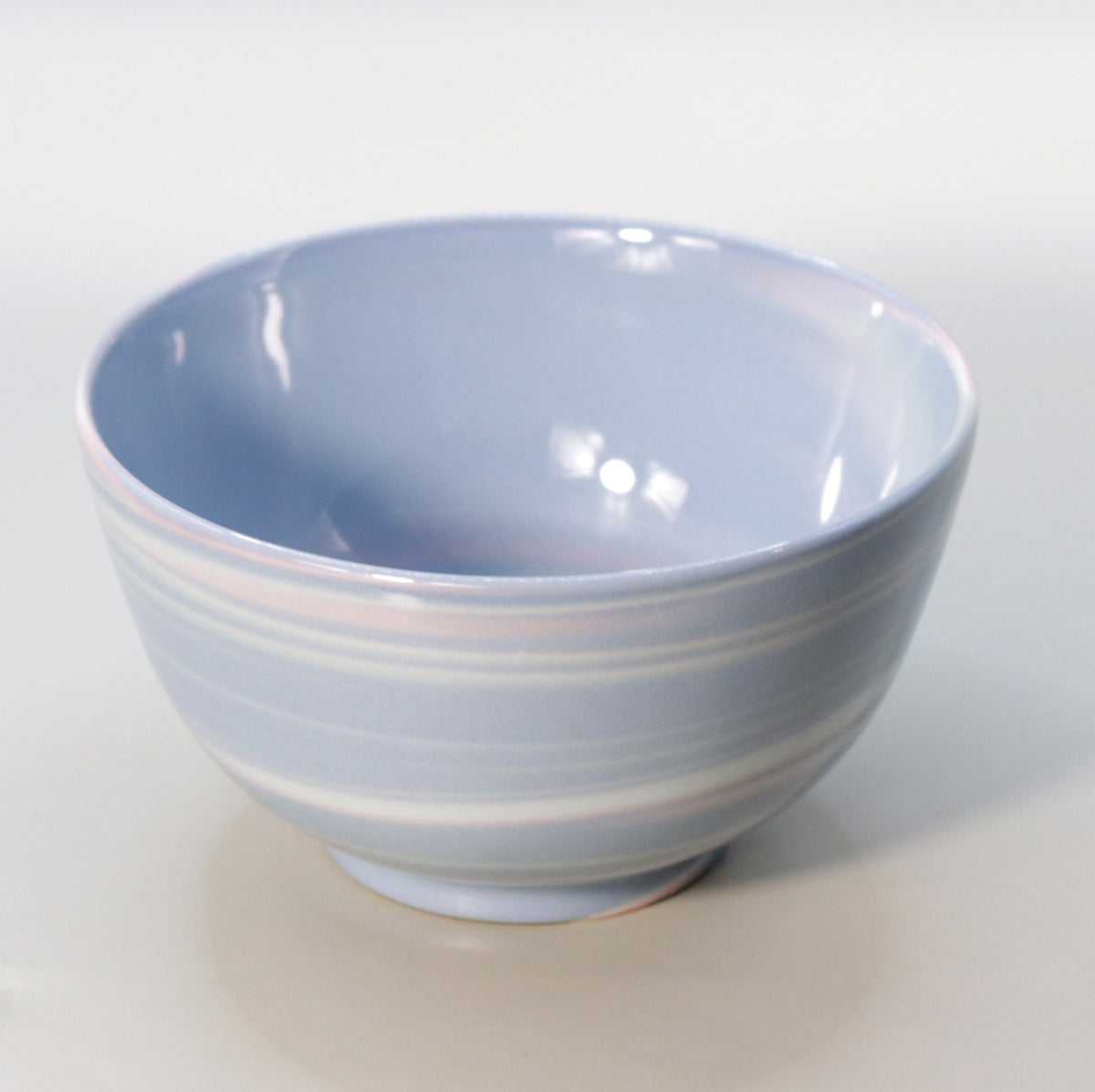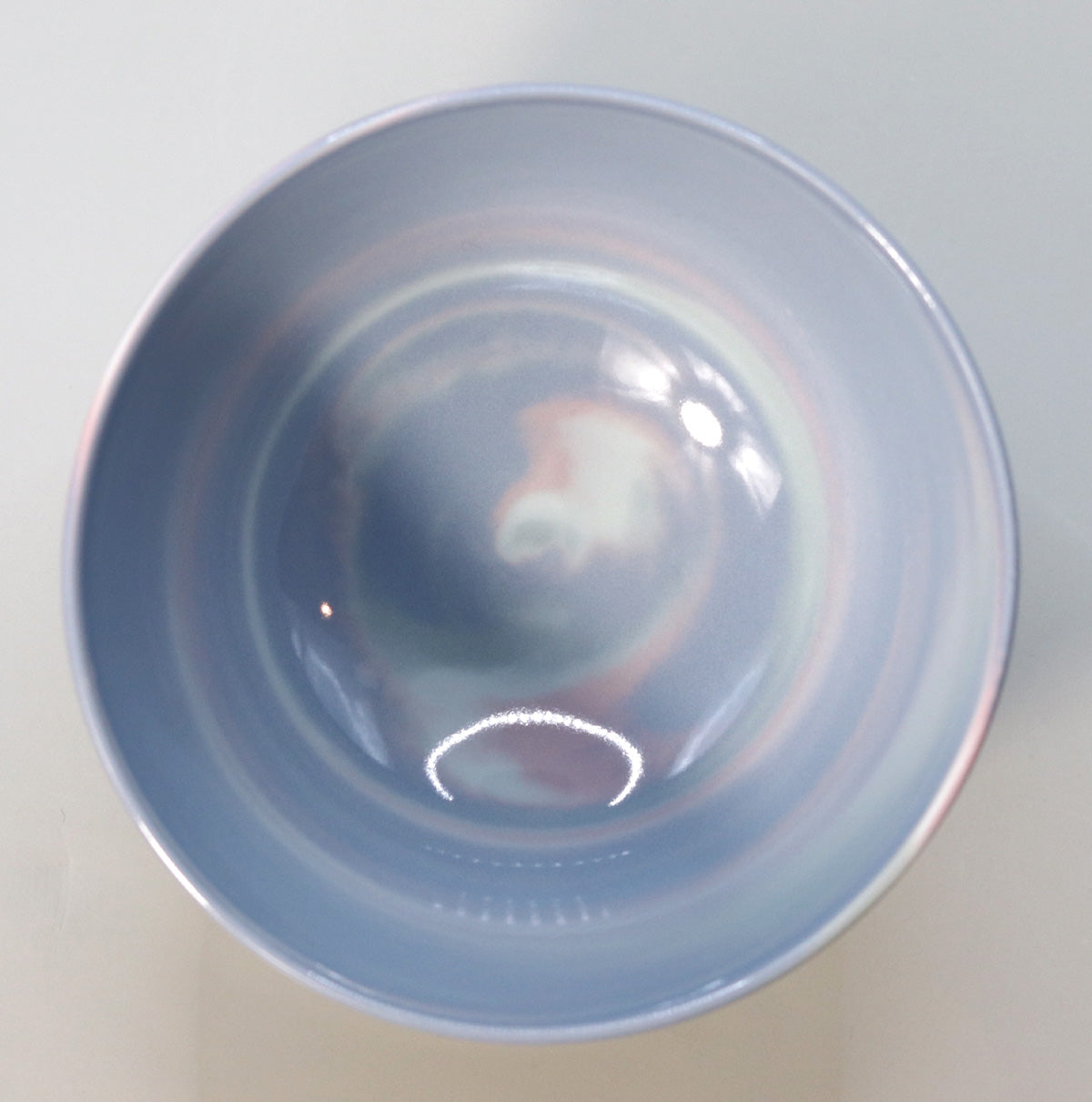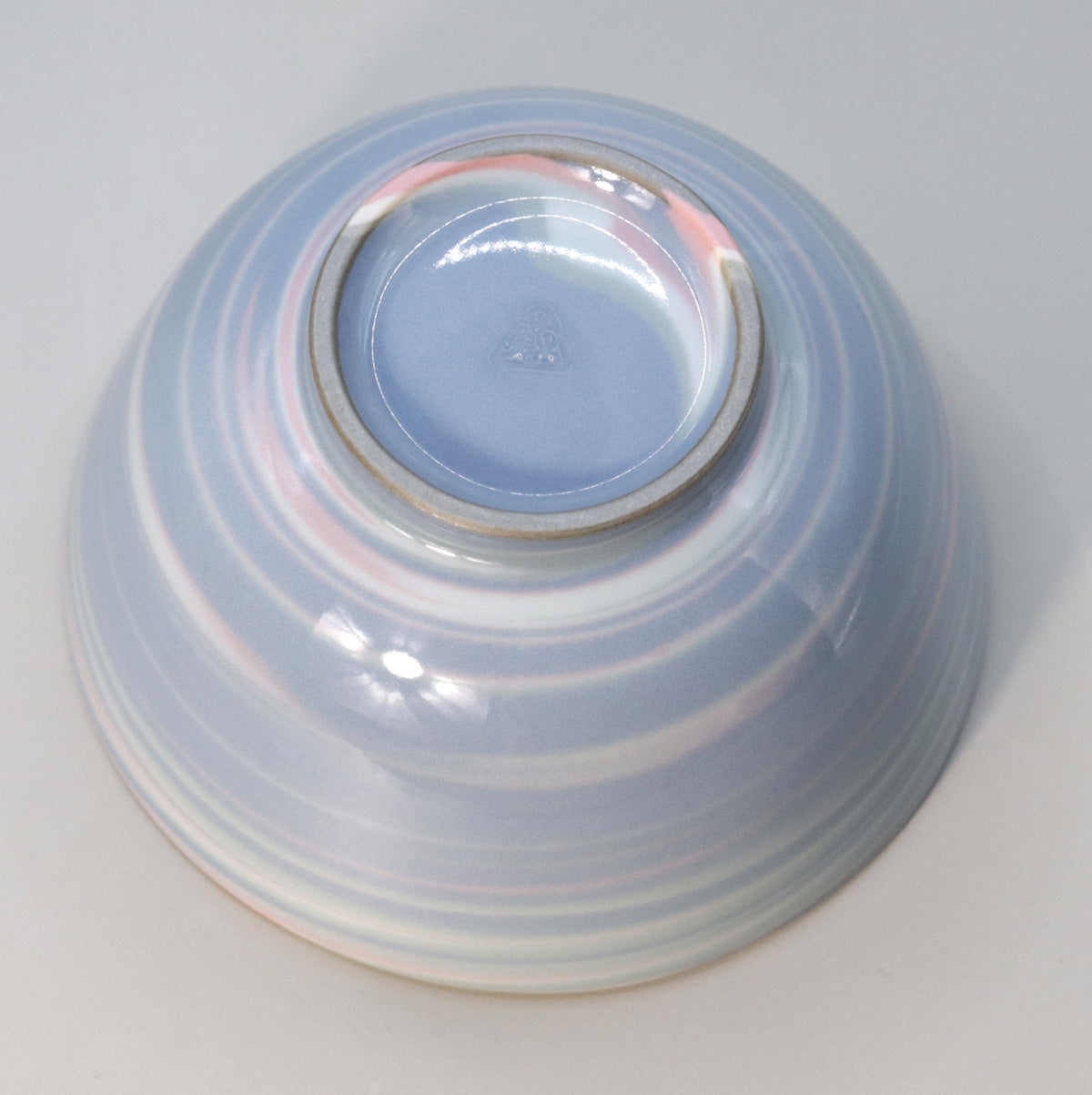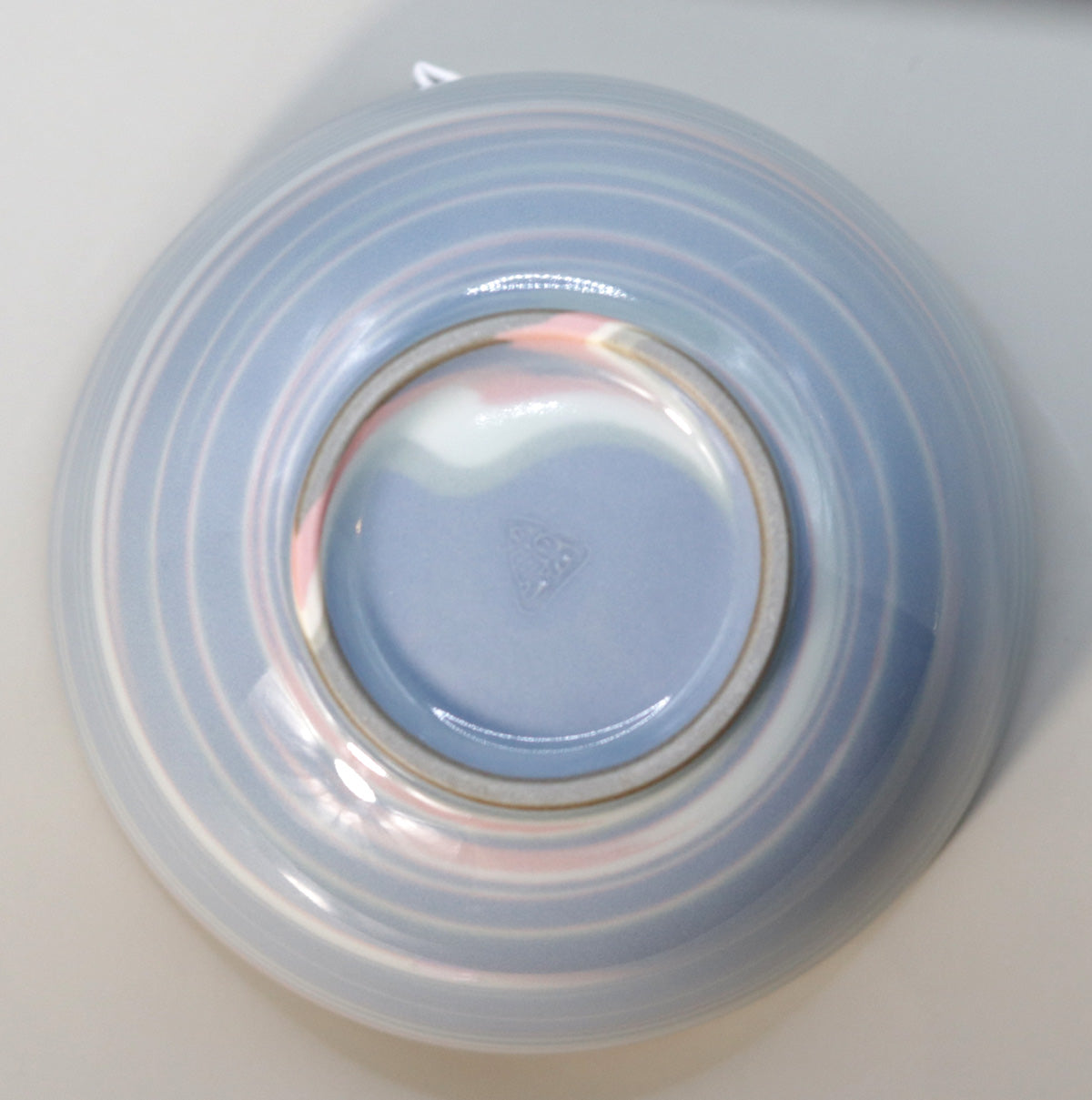Blue porcelain tea bowl Suwa Sozan
Blue porcelain tea bowl Suwa Sozan
Couldn't load pickup availability
Width: 12.7cm Height: 7.0cm
I. Work summary
The "Nerikomi Celadon Dawn Tea Bowl" is a matcha bowl created using the "nerikomi" technique, in which white and red porcelain are inserted into a clay with a base of celadon and turned on a potter's wheel in one go. The deep ultramarine darkness, with a faint pink hue, shifts towards the dawn clouds - in order to seal the air of dawn into the surface of the bowl, Suwa Sozan IV designed the celadon layer to be as thick as possible, and then layered thin layers of white and red porcelain on top to create a soft gradation. The indigo that lingers on the quiet night air and the pale pink of the dawn light that begins to paint the distant sky blend into the jade-colored celadon glaze, and the boundary between night and morning breathes gently in the palm of your hand.
II. Shape and form
Curved rim
The rim is slightly curved outward, making it easy to use the tea whisk and smooth on the lips. The faint blue-and-white line running along the rim suggests the deep afterglow of the morning sun, and the jadeite color of the glaze pool enhances the pale pink.
Gentle body expansion and step cutting
The body is modestly carved in two stages, three-dimensionally expressing the layers of clouds floating in the dawn sky. The carved ridges slightly shift the kneaded layers, creating a rhythm reminiscent of the flow of air.
Shallow spreading prospects and high ground
The inside is shallow, and the kneaded pattern gently converges towards the bottom. When matcha is poured, the green liquid surface is reminiscent of the first day of the year rising into the dawn sky. The base is carved out low, and the shape spreads out gently outwards, making it comfortable to hold in the palm of your hand and lightweight.
III. The technique of kneading and the glaze tones - the depth of the layers that embrace the dawn sky
Layered structure of porcelain clay <br data-start="741" data-end="744">Indigo blue porcelain is at the bottom, with celadon, white porcelain and red porcelain layered in thin strips on top of that. This is then rolled out into a plate and rolled into a cylinder, which is then shaped on a potter's wheel as a core of clay. As it rotates, the layers form horizontal stripes, and the color tones that change from night to morning appear naturally.
A veil of transparent celadon glaze <br data-start="858" data-end="861">After shaping, the entire piece is covered in a highly transparent celadon glaze and then reduced-fired at around 1265°C. The glaze layer acts as a glassy membrane that softly envelops the internal layered pattern and creates a faint, misty blur when exposed to light. The celadon layer suggests the silence of night, the red layer the rose hue of dawn, the white layer the mist of daybreak, and the celadon layer gives the whole piece clarity.
The feel of the glaze surface <br data-start="1015" data-end="1018">The glaze surface is smooth and smooth, with a moist feel that clings to your fingertips. Along with the visual gradation, the tranquility of the texture soothes the mind through the palm of your hand.
Ⅳ. Functional beauty and arrangement at tea ceremonies
| season | Recommended main dessert | Synergistic effect with tea bowls |
|---|---|---|
| early spring | Plum blossom jelly and cherry potato | The crimson layer is reminiscent of a floral mist, gently enhancing the pale pink of the confectionery. |
| summer | Young sweetfish and kudzu manju | The celadon and blue porcelain layers emphasize the cool feeling, reflecting the refreshing feel of the transparent confectionery. |
| autumn | Tsukimi dango and chestnut yokan | The blue magnetic layer deepens the night sky, while the crimson magnetic layer suggests the light of the rising moon. |
| winter | Yukihira Yuzu Mochi | The white porcelain layers evoke a snowy landscape, while the green of the matcha accentuates the signs of life. |
Harmony with Matcha <br data-start="1407" data-end="1410">The vivid green of the matcha emerges in the layered pattern, creating a visual effect as if the “breath of dawn” is residing inside the bowl.
Lighting Effects <br data-start="1477" data-end="1480">When illuminated by the warm light of lanterns or candles, the crimson layer glows softly, while the blue layer deepens the pre-dawn silence. The mysterious scenery is particularly striking in the evening seating.
V. Literary background and technical significance
Scenes of dawn
The color scheme recalls the passage "Purple clouds at dawn" that follows "Akebono" in "The Pillow Book." The gradation from indigo to crimson is overlaid with white mist, transferring the scene from classical literature to the vessel.
The development of Nerikomi Celadon
Based on the monochromatic celadon mastered by the first Suwa Sozan , the fourth generation introduced color and rhythm through multi-layering. The Akatsuki tea bowl is considered a milestone in modern celadon, combining tranquility with subtle changes in color tone.
The challenge of blue-and-white ceramics
Since celadon uses cobalt pigments, the color can easily become cloudy if the balance with the celadon glaze is not correct. In this work, the celadon layer is made as thick as possible, but the timing of switching between the reducing flame and the oxidizing flame is adjusted in seconds to achieve a deep blue color without losing transparency.
Ⅵ. Artist profile and creative approach
The 4th Suwa Sozan (born in Kyoto in 1970) was trained by the 3rd Suwa Sozan and the 12th Nakamura Sotetsu, a lacquer artist , and took over the name in 2002. Based on his research into celadon, he uses a variety of techniques such as Hotarude, Tobiseiji, and Nerikomi Celadon, and upholds the philosophy that "a piece should have a story and be completed in harmony with the user's heart." This tea bowl is filled with the desire to deliver the breath of dawn to the moment of tea ceremony, entrusting the "quiet hope floating between night and morning" to the Nerikomi layer.
VII. Conclusion
The "Nerikomi Celadon Dawn Tea Bowl" is a masterpiece that embraces the deep indigo silence with the pale pink of dawn light, wrapped in a jade-colored celadon glaze. When matcha is poured into it, the green light dyes the dawn sky, bringing a literary atmosphere and seasonal changes to the tea ceremony. This work, which crystallizes the outstanding technique and poetic sensibility of the 4th generation Suwa Sozan , envelops the venue with dignity and serenity rather than luxury, and will bring a gentle hope and a sign of new life to the hearts of those who see it.
Share

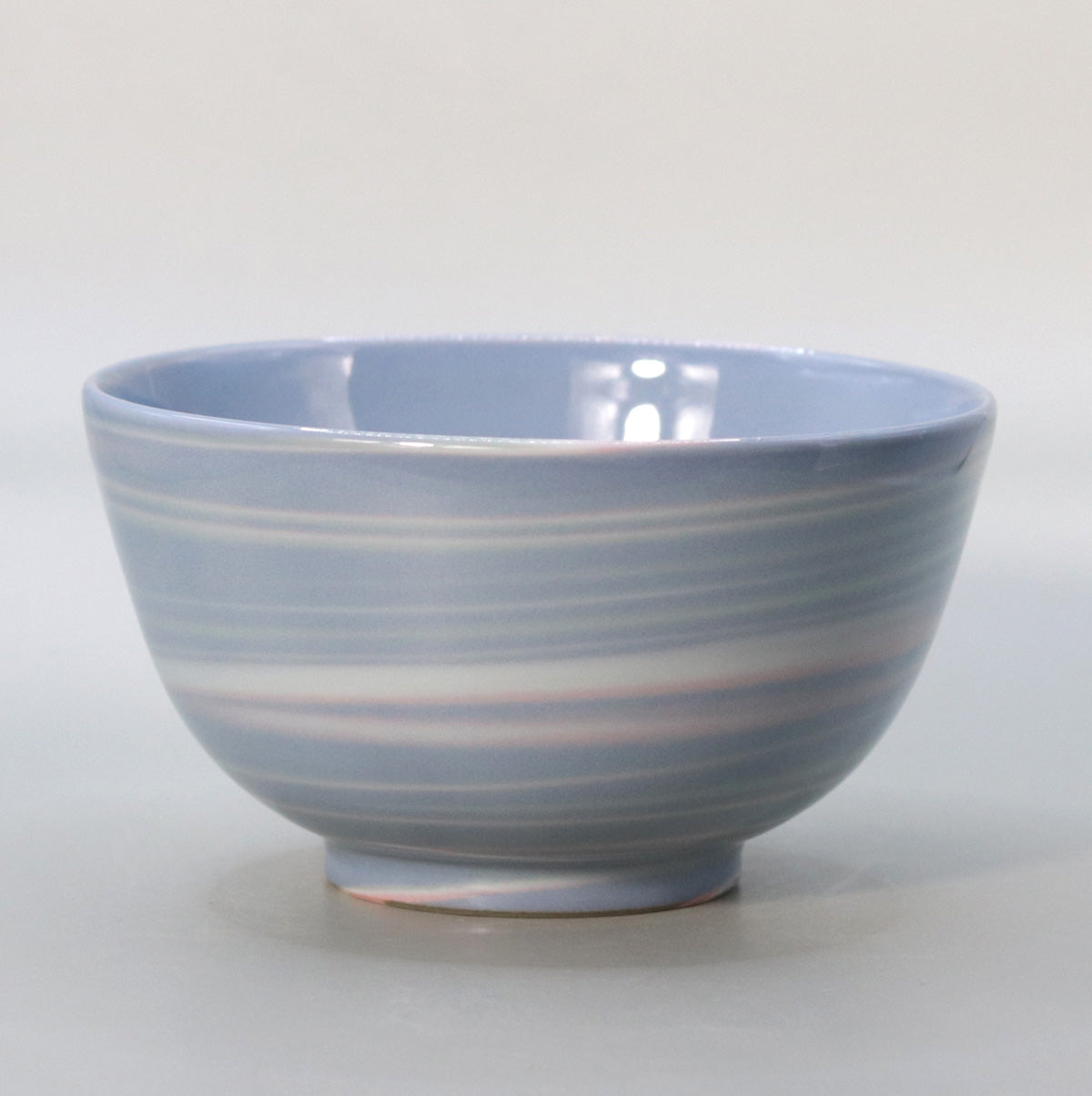


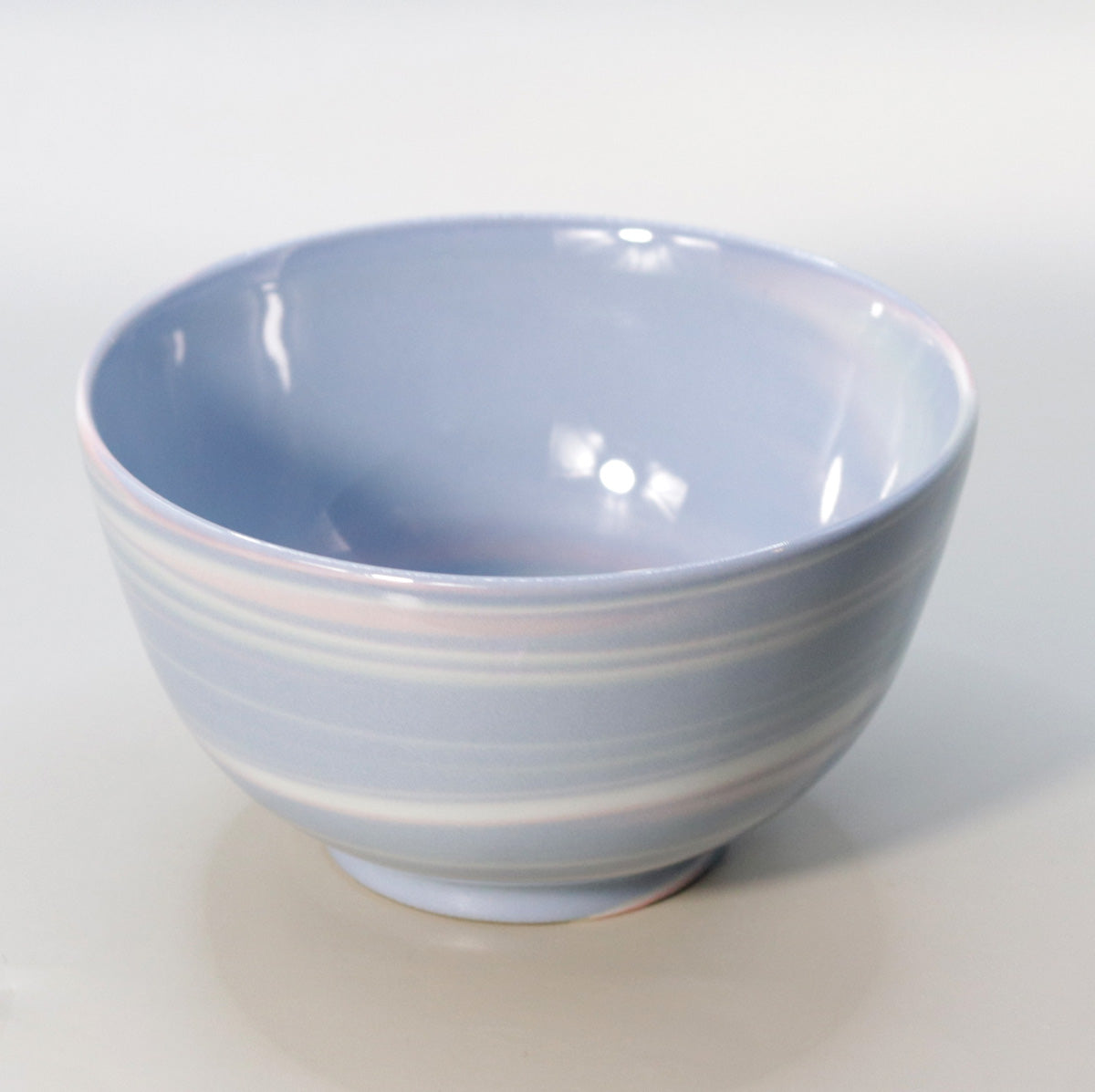
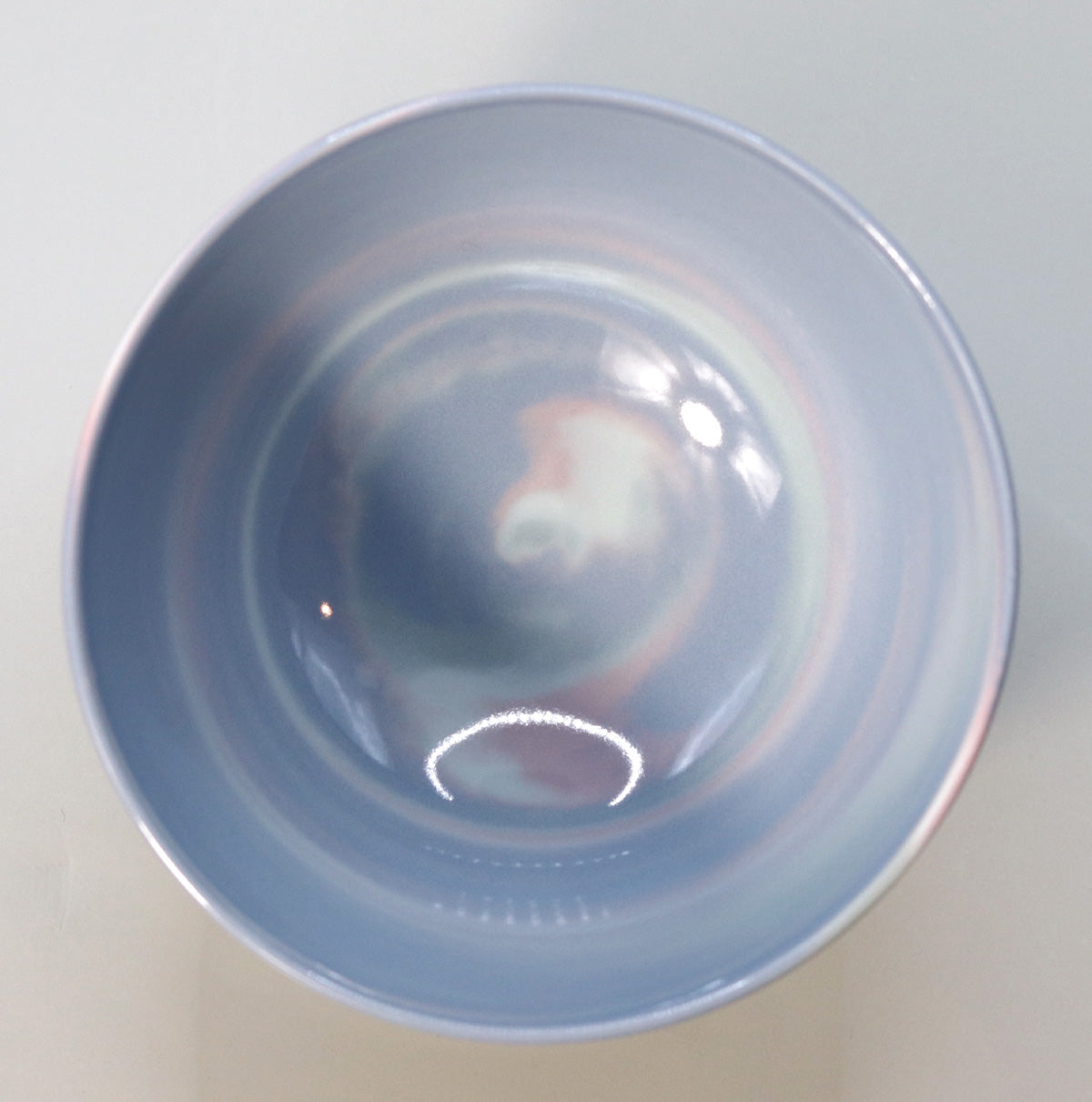
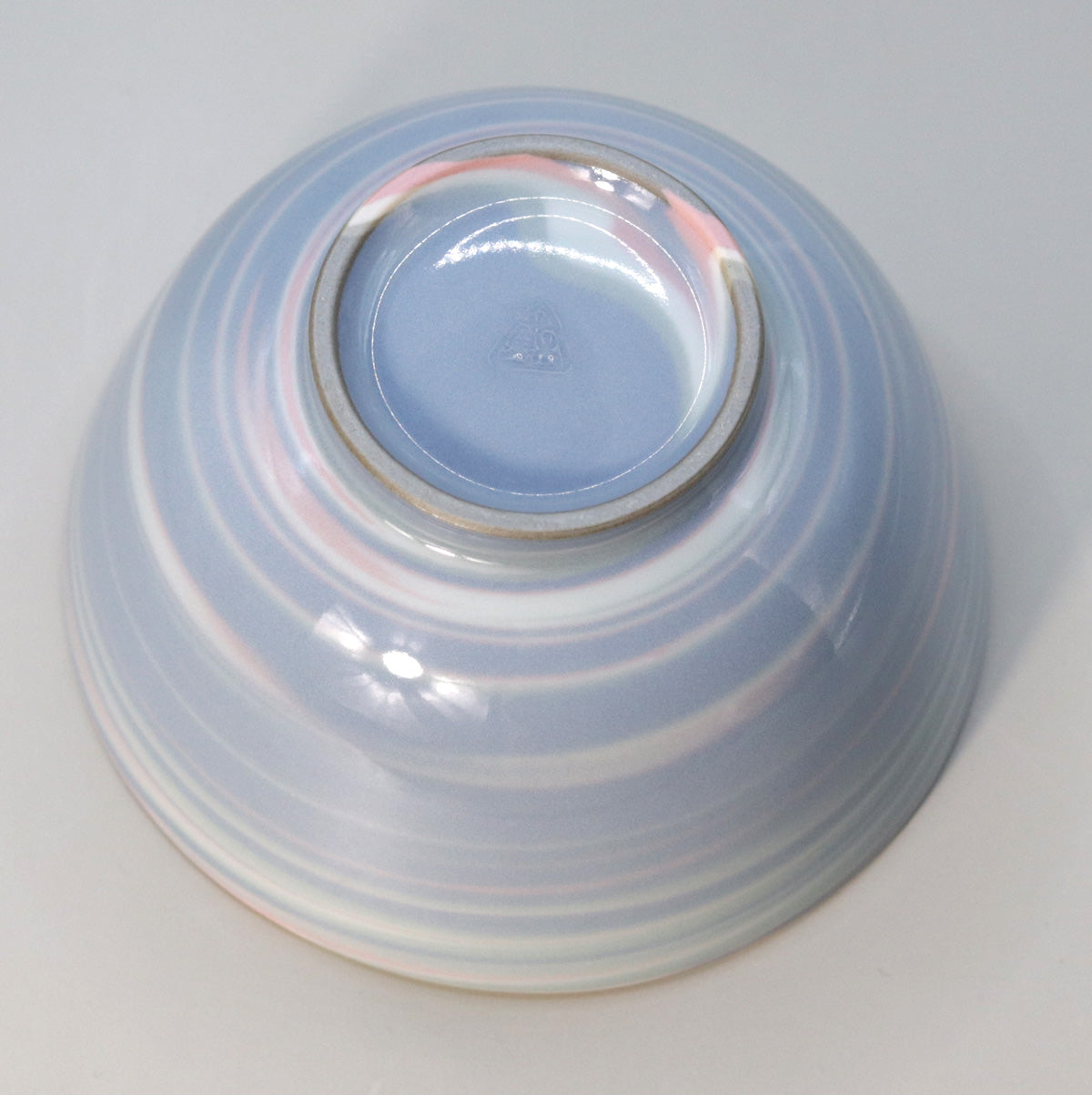
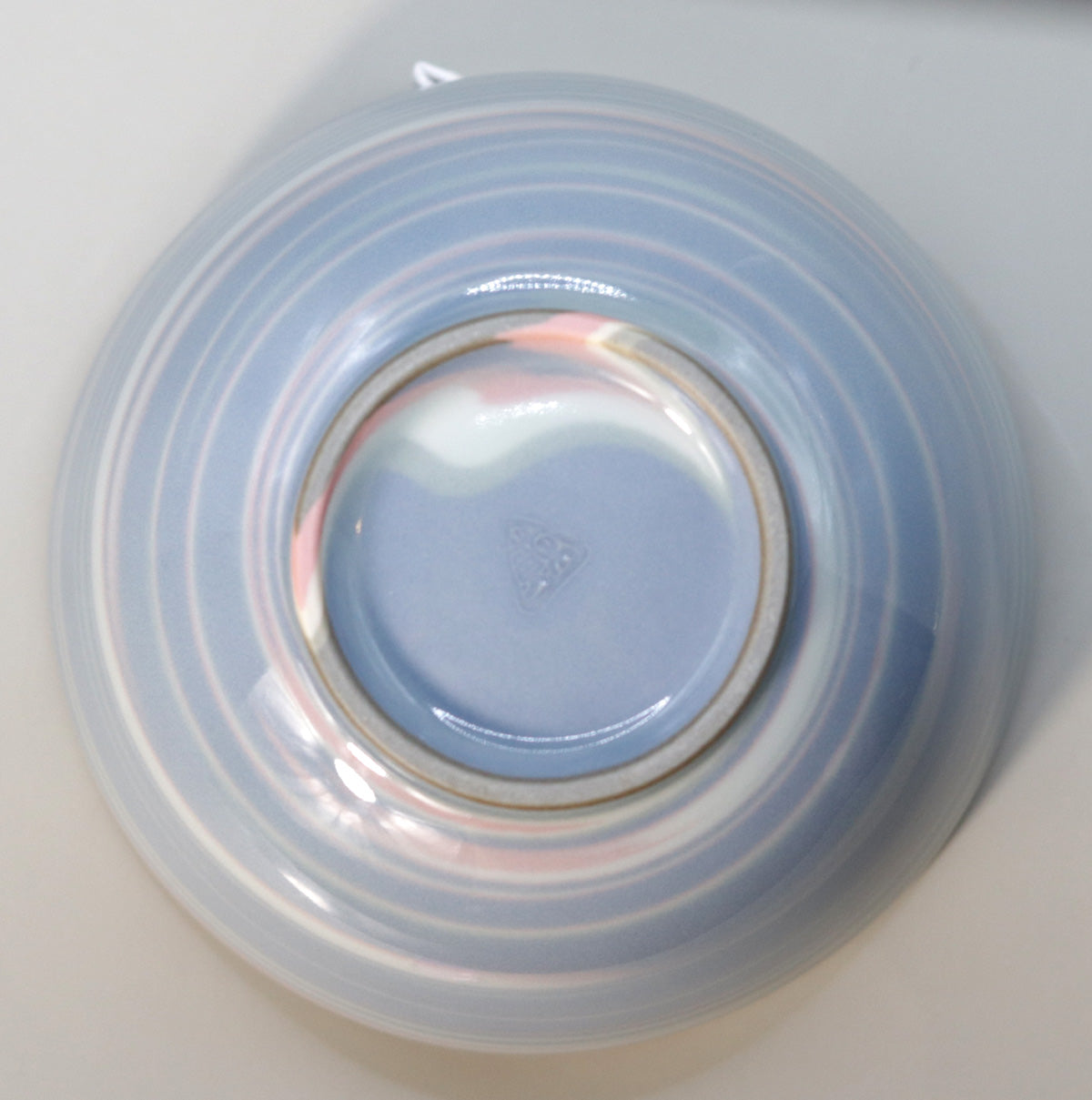
Multi-Column
-
[I will send it to you quickly and carefully]
We carefully package each product in a way that suits it best.
Also, delivery times vary depending on the piece (vessel, etc.).
Items that already come with a box will be shipped within 1-3 days of the order date.
For items that require a box to be made after your order, it will take approximately 30 days for production to be completed and then shipped.
In either case, once we have confirmed your order, we will contact you by email to inform you of the delivery date.
-
[Requests when purchasing pottery]
Even products that look the same may differ slightly in color, shape, size, etc.
The way the glaze is used, the power of the kiln, the firing method, the season, and the humidity also affect the appearance of the pottery.
Please understand the individuality of each piece of pottery and enjoy the unique warmth of handmade.

